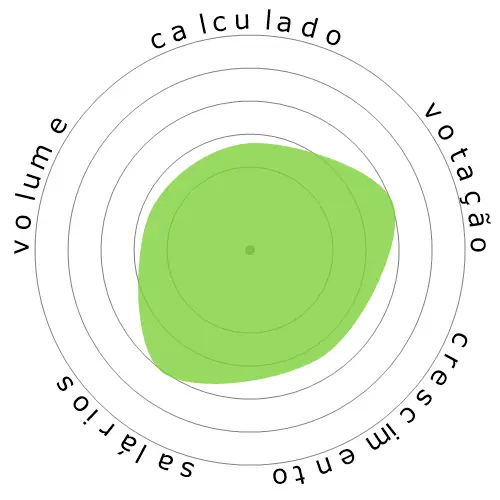Químicos




As pessoas também visualizaram
Risco de automação calculado
Risco Moderado (41-60%): Ocupações com risco moderado de automação geralmente envolvem tarefas rotineiras, mas ainda requerem algum julgamento e interação humanos.
Mais informações sobre o que é essa pontuação e como ela é calculada estão disponíveis aqui.
Enquete do usuário
Nossos visitantes votaram que há uma baixa chance de esta ocupação ser automatizada. Esta avaliação é ainda mais apoiada pelo nível de risco de automação calculado, que estima 46% de chance de automação.
O que você acha que é o risco da automação?
Qual é a probabilidade de que Químicos seja substituído por robôs ou inteligência artificial nos próximos 20 anos?
Sentimento
O gráfico a seguir é incluído sempre que há uma quantidade substancial de votos para gerar dados significativos. Essas representações visuais mostram os resultados das enquetes dos usuários ao longo do tempo, fornecendo uma indicação importante das tendências de sentimento.
Sentimento ao longo do tempo (anualmente)
Crescimento
Espera-se que o número de vagas de emprego para 'Chemists' aumente 7,6% até 2033
Emprego total e estimativa de vagas de emprego
As projeções atualizadas são devidas 09-2025.
Salários
Em 2023, o salário anual mediano para 'Chemists' foi de $ 84.680, ou $ 40 por hora
'Chemists' receberam 76,2% a mais do que o salário médio nacional, que era de $ 48.060
Salários ao longo do tempo
Volume
A partir de 2023 havia 83.530 pessoas empregadas como 'Chemists' dentro dos Estados Unidos.
Isso representa cerca de 0,06% da força de trabalho empregada em todo o país
Dito de outra maneira, cerca de 1 em 1 mil pessoas são empregadas como 'Chemists'.
Descrição do trabalho
Realize análises químicas qualitativas e quantitativas ou experimentos em laboratórios para controle de qualidade ou de processo, ou para desenvolver novos produtos ou conhecimentos.
SOC Code: 19-2031.00


Comentários
Leave a comment
There are autotitrators and autosamplers for many different equipment (Dissolution systems, HPLC, GC, UPLC, Mass spec and so on). These technologies have been around for decades yet analysts are still required to prepare samples, analyze them and then interpret and report data .
The two tenants which make a job susceptible to replacent by automation are Predictability and complexity. Some chemical analysis (more specifically wet chemistry, non-instrumental techniques) is more complex than what current automation systems can handle (i.e. chemical digestion of a sample, followed by extraction with a solvent, evaporation of the solvent) also sample quality is unpredictable (hence why QC labs exist, if every manufacturing method was flawless there would be no need for QC/QA).
Aspects of Inorganic Chemistry, Physical Organic Chemistry, and Polymers (as a part of Organic Chemistry) are very relevant to developing new materials with desirable properties. In fact, the Bureau of Labor Statistics (BLS) in the U.S.A. categorizes Chemists and Material Scientists as one and the same profile.
Job opportunities for Material Scientists do allow Chemists to be considered as Material Scientists when the Chemist has experience and multiple credits in Physical Chemistry, Polymers, and/or Inorganic Chemistry. Many Chemists follow this professional direction. In fact, some departments are even named 'Materials Chemistry'.
This fact indicates that one of these professions has an incorrect percentage representation on this website. Either Materials Science should have 51% (or a percentage much closer to Chemistry) on this website, or Chemistry should have 22% (similar to Materials Science). The large discrepancy simply reflects a mistaken view on the nature of their work.
Chemistry, by default, incorporates aspects of Physical Chemistry applicable to materials. It is suggested to reassess the activities of chemists to correct the percentage that has been flawed in a previous assessment.
Deixe uma resposta sobre esta ocupação